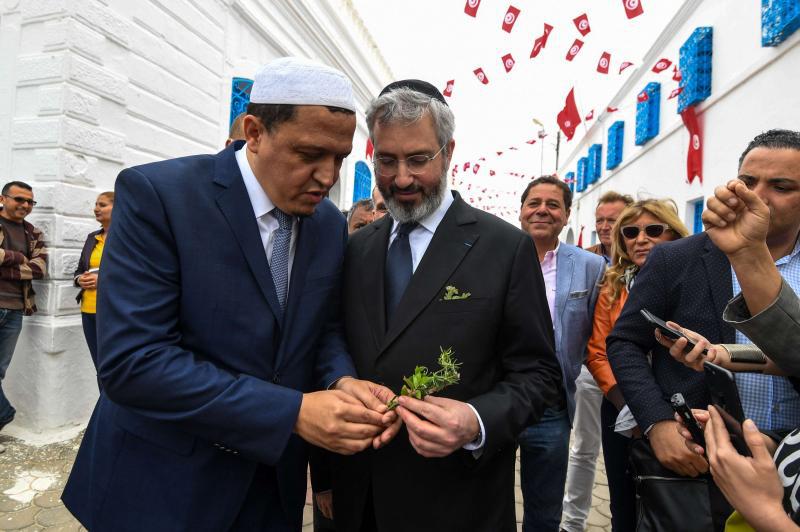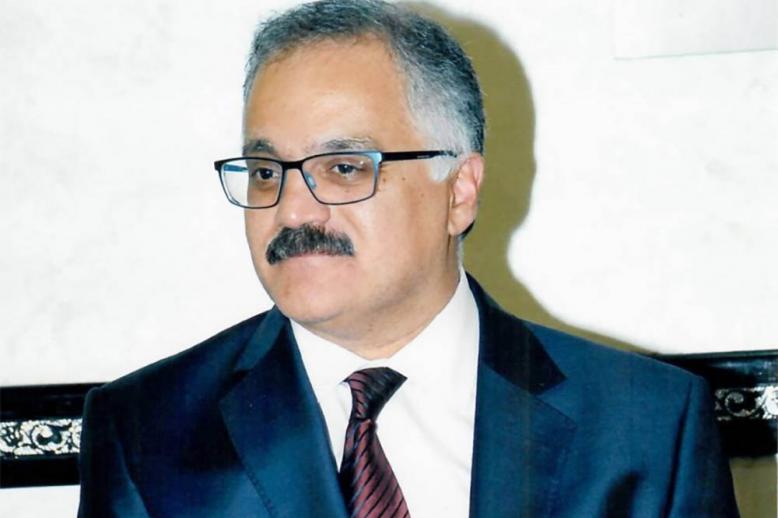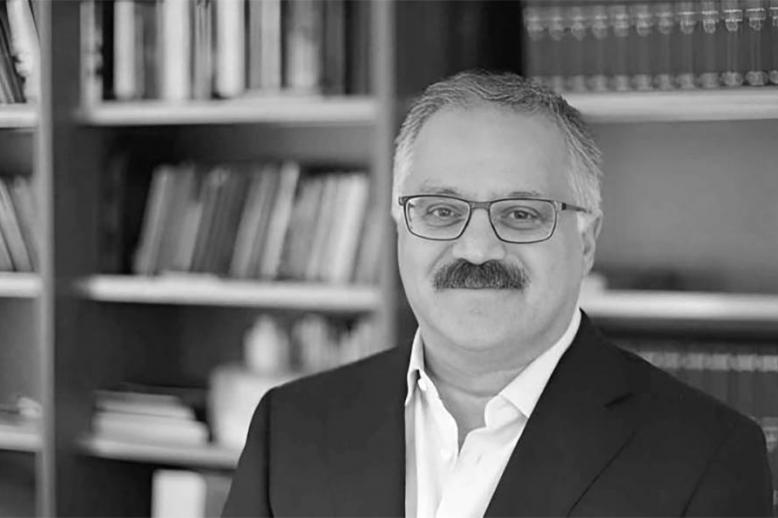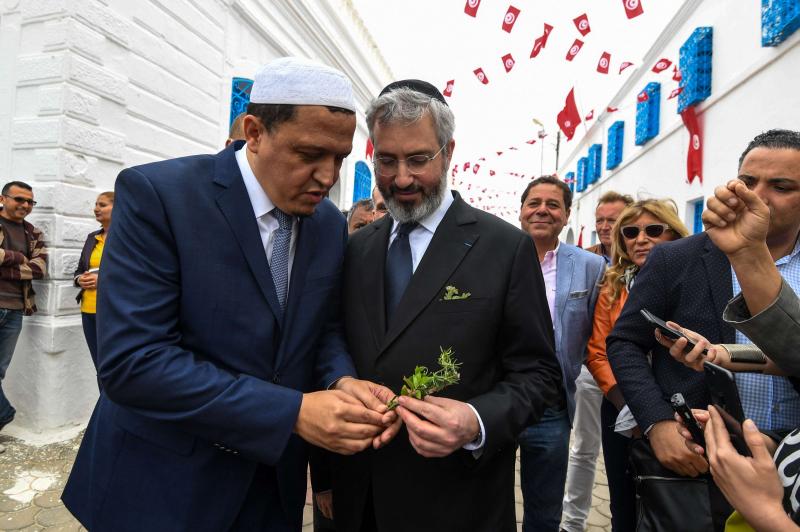El Ghriba offers rare example of religious tolerance for Muslims, Christians and Jews
The island of Djerba is just off Tunisia’s southern shore, 294km from Tripoli. Yet the peace that prevails in Djerba is as far from the mayhem of the Libyan capital as can be imagined. So is the very peaceful relationship maintained by the approximately 1,000 Jews who live there with their Muslim neighbours.
Even more unusual in a Middle East where wounded identities clash daily, often unleashing bloody mayhem, millions of refugees and failed states, the annual pilgrimage to El Ghriba involves the happy mingling of Jews and Muslims.
It was the case again this year, as citizens of Djerba came to share the celebration of the annual festival with their Jewish neighbours.
El Ghriba synagogue was, legend says, founded after the destruction of King Solomon’s temple in 586BC. It is more likely, however, that it was founded after the second destruction of the temple in Jerusalem in 70AD. A Jewish necropolis in Gammarth, near Carthage, attests to the presence of Jews in Tunisia half a millennium before Christ in what was then the thriving capital of a Phoenician empire which spanned the western Mediterranean. The Talmud mentions several Carthaginian rabbis.
Persecution against the Jews and other Christian minorities followed the legalisation of Christianity by the Roman Empire by the edict of Milan in 313 and Byzantine rule in North Africa in the sixth century. During the 1,400 years of Muslim rule in Tunisia and more broadly in North Africa, relations between Jews and Muslims seesawed but never were Jews treated with the callousness shown to them by European Christians in the 13th century or during the 20th century.
Indeed, during the second world war, when the Germans occupied Tunisia, from November 1942-April 1943, many Tunisian Arab Muslims took an active part in saving Jews, by hiding them, as did Khaled Abdul-Wahab in his olive oil processing plant in Mahdia or dressed up as farmhands as other big landowners did.
Abdul-Wahab was the first Arab to be nominated to recognition at the Yad Vashem memorial in Jerusalem as one of the Righteous Among the Nations — non-Jewish individuals who helped Jews escape the murderous policy of the Nazis. Hundreds of others in Tunisia and neighbouring Algeria should be recognised for saving countless Jews from the clutches of the German Army or French Vichy officials.
Among this year’s Jewish pilgrims, from France, Israel and many European countries, many were astonished to hear those stories from the second world war.
Senior Ashkenazi rabbis said they were surprised to hear about the behaviour of Djerba’s inhabitants, mostly Muslims, towards their Jewish peers, notably during the months during which German troops occupied the country.
The synagogue built just more than a century ago, lies a few kilometres outside the major town of Houmt Souk in Hara Sghira. The nearby Jewish village of Hara Kebira, where most of the island’s Jews live, boasts a school for Jewish girls and one for Jewish boys.
As for the synagogue, it stands on the site of a much older building. A synagogue has been there since the fourth or sixth century. One of the legends associated with its founding claims that either a stone or a door from King Solomon’s temple or the second temple is incorporated in the building, linking the Jewish diaspora to “the sole sanctuary of Judaism,” Jerusalem.
In modern times, local Tunisian Jews are distinguished by their dress. They are few compared to the 105,000 who lived in Tunisia before independence from France in 1956 but are a reminder of the days when religion was less instrumentalised by politicians, when people considered themselves Tunisian before being Jews, Muslims or Christians.
Among the 5,000 pilgrims to El Ghriba, many were Muslim inhabitants of Djerba who shared the festivities of their Jewish neighbours. Young Tunisian Jews walked arm in arm with their Muslim friends. Such scenes will do little to change relations between the Israelis and Palestinians or between Muslims and Jews more broadly but they offer a flicker of hope for the future.
Inside the synagogue, which offers a lavish exercise in blues, people mingled, talking in Hebrew, Arabic, French and English. Rabbis from London and Paris, some born in Djerba, exchanged news and views. In one corner, older men drank boukha, the traditional Jewish Tunisian alcohol distilled from figs to bless the pilgrims. Boukha traditionally accompanies kemia, the local equivalent of what is known today as “tapas.”
In a building across the narrow street, a large crowd sang old Tunisian songs accompanied by an orchestra and traditional Tunisian dishes could be bought. By any standards of the Mediterranean of 2018, this was an extraordinary scene.
Set against the country’s history it was not. During the second world war, the Tunisian ruler Moncef Bey did all he could to shelter Tunisian Jews from the laws of Vichy France and the Germans while the nationalist leader, who became Tunisia’s first president after independence, Habib Bourguiba, would have no truck with Marshal Petain or Benito Mussolini.
Bourguiba gave women equal rights in 1956, decades before women won theirs in Italy or Spain. One of his successors, President Beji Caid Essebsi, recently put forward proposals to reform the country’s inheritance laws, which according to traditional Islamic jurisprudence give men twice the share of women.
“Inheritance is a matter for mankind that God left to the diligence of man,” Caid Essebsi said, adding that updating religion-based laws would not mean abandoning religion as “democracy goes hand in hand with respect for Islam.”
Tunisia’s lesson of tolerance in all the forms it takes has been hard-earned. As a young democracy, the country offers to the broader communities of Muslims, Jews and Christians around the world a rare example of tolerance, which the pilgrimage to El Ghriba illustrated to perfection.
This article was originally published in The Arab Weekly.






